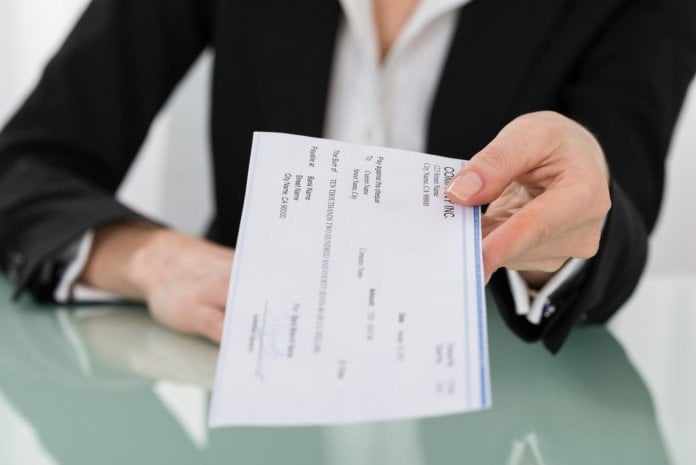Everything You Need to Know About Reading Your Paycheck: If you’re not regularly checking your paycheck stubs, you could be leaving money on the table. In fact, statistics show that 82 million US workers have experienced paycheck errors If you’ve ever asked “Why to read your paycheck stub?” this should be reason enough!
To prevent this from happening to you, it’s important that you understand exactly how to read your paycheck. If you’re not sure, you’re in the right place! Keep reading for a detailed outline of what you’ll find in your paycheck stub.
Table of Contents
Paycheck Stub Basics
It used to be that every worker received a paper check that they took to the bank to deposit or cash. Attached to your physical check was a paycheck stub. This contained all of the details about how much you earned, how much was deducted, and the final amount you received.
Today, the majority of the population receives their pay electronically through direct deposit. However, you should still receive a digital version of your “paycheck stub.” Your employer may have their payroll processor provide this to you, or they may use an online paystub creator.
Whether you receive a hard-copy or digital paystub, the information it contains should be the same.
All paystubs should list your name. Some may also include your address and the last 4 digits of your Social Security number.
It will also show your pay period, which is the timeframe for which the paystub is reporting. In addition, many paystubs will also show your year-to-date (YTD) numbers.
Gross Pay vs. Net Pay
The next thing you’ll notice on your paycheck stub is your gross pay and net pay. If you’re an hourly worker, gross pay is calculated by multiplying the number of hours you’ve worked by your hourly wage.
Salaried employees’ gross pay is typically the annual pay divided by the time period the paystub covers. For example, if you earn $50,000 a year and you get paid once a month, your gross pay would be $60,000/12 or $5,000.
Your check will list all of the withholding amounts (more on that below) and then, at the bottom, will show your net pay. This is the amount you actually receive on payday.
Tax Withholdings
One of the biggest deductions from your paycheck is due to tax withholding. All workers have to pay Federal income tax and Social Security and Medicare tax. Depending on where you live, you may also have to pay state and local taxes.
Federal taxes are withheld based on the information you provided when you completed the form W4 and your tax bracket. Your employer is required by law to withhold the proper amount of money and forward it to the IRS on your behalf.
Federal Insurance Contributions Act (FICA) includes both the Social Security and Medicare tax. These amounts are regulated by law.
The Social Security tax rate is 12.4% of your gross income. If you work for an employer, you’ll pay 6.2% and your employer will pay 6.2%. Self-employed workers are responsible for the entire 12.4%.
The Medicare tax rate is 2.9%. Your employer will also split this with you, so each of you will pay 1.45%.
Benefits Deductions
Next, you’ll see a list of your deductions made for your employee benefits. Some of these will be pre-tax and some after-tax. The most common deduction you’ll see are:
- Health insurance premiums (ex. medical, dental, vision)
- Retirement savings contributions (ex. 401k, 403b, Government 457)
- Flexible Spending Account (FSA) and Health Savings Account (HAS) contributions
- Life insurance premiums
- Disability insurance premiums
If your employer is making contributions to your retirement plan or paying all or a portion of your benefits, this will likely be listed on your paycheck stub as well. However, this isn’t required. Some employers may list it on the paycheck stubs they provide while others may not.
Other Deductions
There are some other deductions you may see on your paycheck. This will depend on your personal situation. If you owe money for child support, alimony, unpaid taxes, or defaulted student loans, then you may see a deduction on your paystub for wage garnishment.
Some workers are part of a union. In this case, you may see a deduction for union dues or fees. Some unions offer taxable fringe benefits, which would also show up on your pay stub.
Understanding each of these deductions and how they’re calculated is very important. It’s always a good idea to check with the unit director and/or review your garnishment paperwork to ensure that the deductions are correct.
Overtime Hours
If you’re an hourly employee, it’s also important to keep track of the hours you’ve worked and to make sure they’re reflected properly on your paycheck stub. If you’ve worked overtime, make sure that these hours are listed and are calculated as overtime hours.
Review Your Paycheck Stub Today
Now that you know exactly how to read your paycheck stub, take a few minutes to do it today! Remember that you’re responsible for being your own financial advocate. You work hard, so it’s important to make sure that you’re being paid correctly for the work you do.
Don’t make the mistake of reviewing your check once and forgetting about it. This should be a habit that you get used to doing regularly. This is especially important if you’re an hourly worker and the amount of your check varies from on pay period to the next.
Don’t go away just yet! Our blog has plenty of informational posts that will help you with everything from business and marketing to personal finance and investing. Set yourself up for success by browsing through some of them today!


